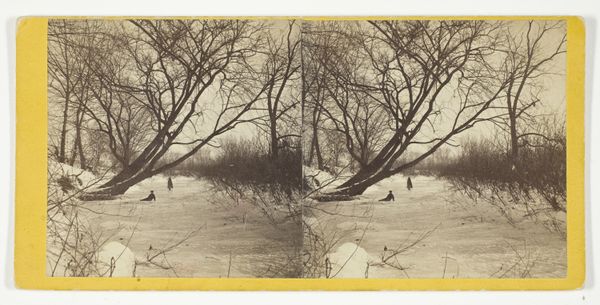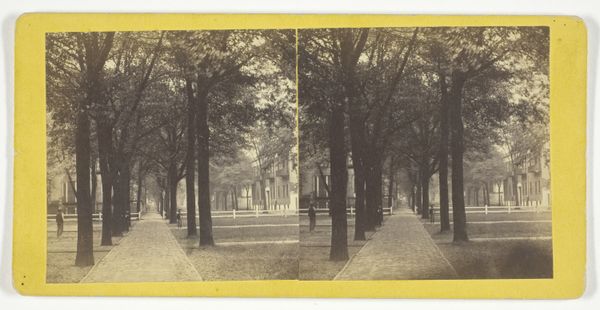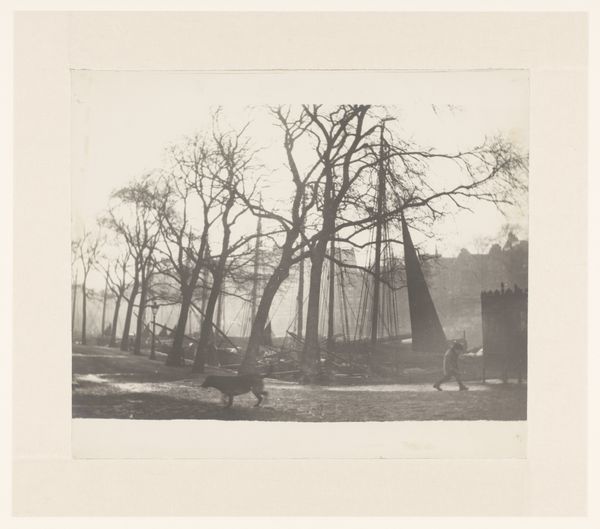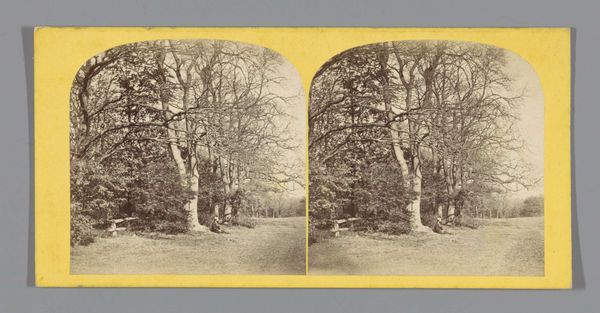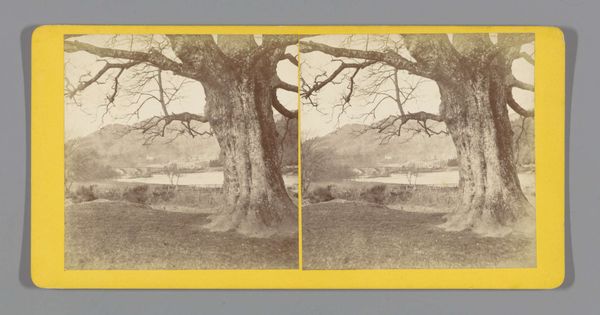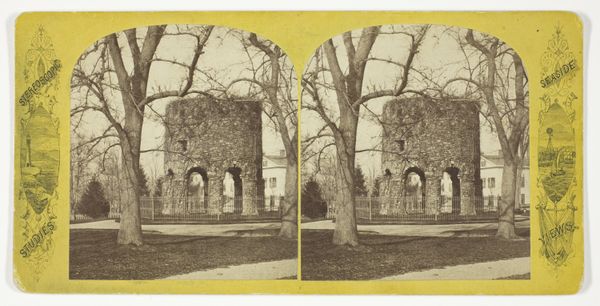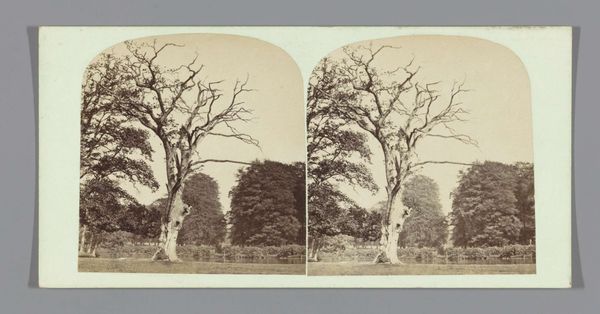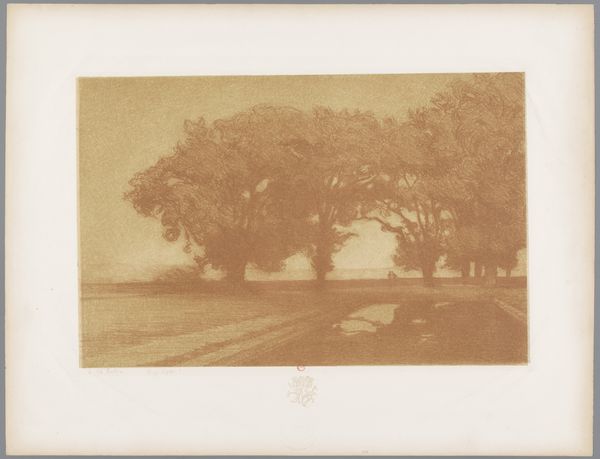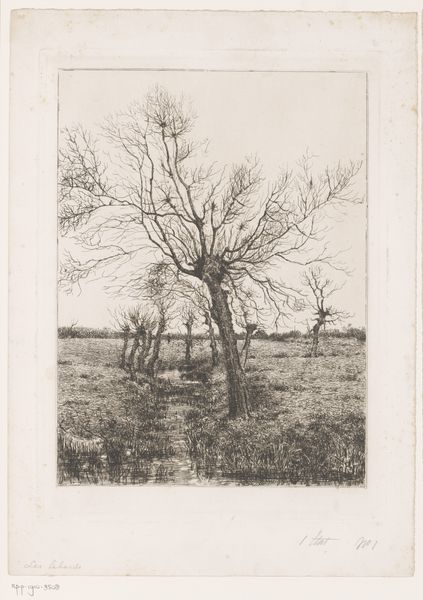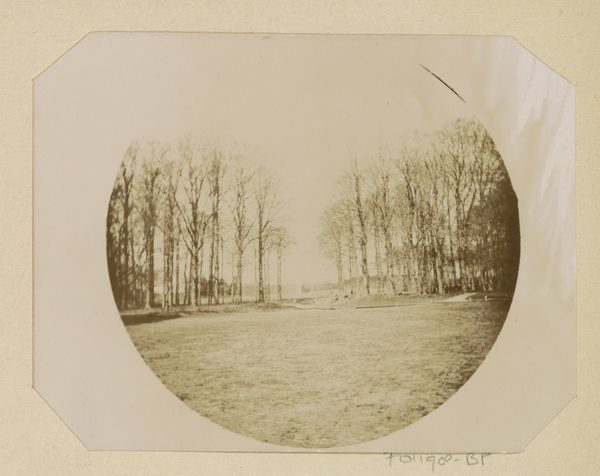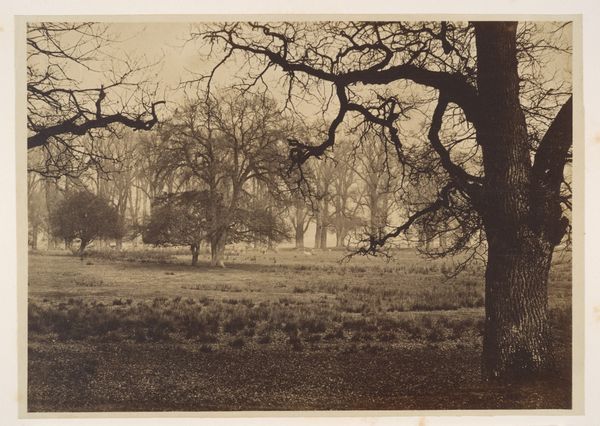
Dimensions: 7.8 × 7.5 cm (each image); 8.5 × 17.5 cm (card)
Copyright: Public Domain
W.G.C. Kimball's stereograph, Orphans' Home, presents us with an early photographic tableau of an orphanage set against a stark, wintry landscape. Dominant is the leafless tree, its branches reaching out like supplicating arms; a symbol of life's tenacity amidst adversity. Consider the enduring motif of the tree of life. From ancient Mesopotamian art to the Norse Yggdrasil, the tree connects the earthly with the divine, mirroring the orphanage's role as a sanctuary. The barren branches, however, evoke a sense of vulnerability and longing, akin to the classical image of the weeping willow, a melancholic emblem found on tombstones, symbolizing grief and remembrance. The white picket fence encloses the orphanage, a protective boundary that both shields and isolates. Such structures appear throughout art history—garden walls in medieval tapestries or fortress ramparts in battle scenes—always signifying spaces defined by exclusion and inclusion. The image resonates with a deep, primal narrative of protection and abandonment, stirring within us a complex interplay of hope and sorrow. Kimball invites us to contemplate the home’s role in the cycle of survival, echoing through time.
Comments
No comments
Be the first to comment and join the conversation on the ultimate creative platform.
